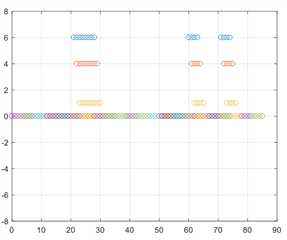主题: TX12中讨论的其他器件
工具/软件:
您好、
我将通读"使用4芯片级联的信号处理"文档、其中详细介绍了 MMWCAS-RF-EVM 并介绍了 TI 提供的 MATLAB 示例代码。 我正在仅使用级联雷达的方位角通道进行一些信号处理。 我对以下段落有疑问。

该文档指出使用 TX4~TX12和所有16RX 天线进行方位角处理。 然后、我们提到、由于忽略了重叠的天线、方位角方向上有86个虚拟天线。 因此、我想问是否有办法知道哪些天线对重叠、以便只能在我的处理中使用不重叠的86对 RX-TX? 另外、86个频道使用它们的顺序、如下图所示、在我的代码中按时间顺序使用它们。

提前感谢您的帮助!
